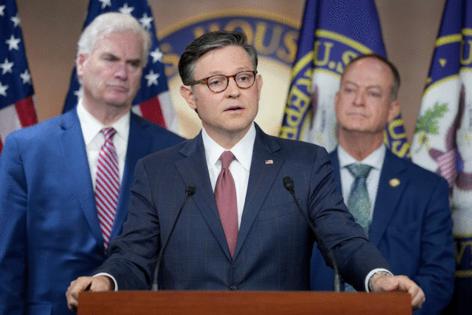Congressional Budget Office: GOP budget bill would take from the poor, give to the rich
Published in Political News
WASHINGTON — The House-passed reconciliation bill would most benefit high earners and reduce financial resources available to the lowest-income households, the Congressional Budget Office said in a distributional analysis of the measure Thursday.
The nonpartisan agency said it estimates that over the fiscal 2026 through 2034 period, after-tax income and federal benefits “would decrease for households toward the bottom of the income distribution, whereas resources would increase for households in the middle and top of the income distribution.”
The analysis follows up on an earlier assessment of the bill by the CBO after it was approved by the House Budget Committee, but before it was modified by a manager’s amendment and passed by the House on May 22.
The impact on households is driven by the extension of the 2017 tax cuts and additional tax cuts in the bill; reductions in subsidies for health insurance under the 2010 health care law; cuts in federal spending on Medicaid and the Supplemental Nutrition Assistance Program; increased spending on defense and border security; reductions to federal employee pensions; receipts from spectrum auctions and other changes.
The CBO said on average, household resources would increase over the nine-year period, mainly because of tax cuts that would result in people keeping more of their income.
Higher-income households would benefit the most by receiving a larger tax cut because they earn more money. The agency said the lowest 10% of earners would see a $1,600 or 3.9% reduction in their available income and benefits per year, adjusted for inflation, mainly due to cuts in Medicaid and SNAP.
The top 10% of earners would see a $12,000 or 2.3% increase in their resources thanks to the bill’s tax cuts. “Those projected increases are mainly attributable to reductions in the taxes households in that decile owe,” the CBO said.
Households in the middle of the income distribution would see their resources increase as well, but not by as much — $500 to $1000, or less than 1% annually, the analysis said.
Rep. Brendan F. Boyle, D-Pa., ranking member on the House Budget Committee, said the results confirmed the “shameful” impacts of the GOP budget bill. He said in a statement that the analysis “shows this would be one of the largest transfers of wealth from working families to the ultra-rich in American history.”
GOP leaders didn’t comment initially.
Expressed in 2025 dollars, the CBO said the net impact of the bill during the nine-year period would be to increase financial resources available to households by $2.2 trillion:
•Overall, tax cuts and “cash transfers” in the bill, such as refundable tax credits, would increase household resources by $3.1 trillion, according to the report.
•Lower federal spending on Medicaid and SNAP would reduce household resources by $1 trillion.
•The agency estimates that changes in Medicaid eligibility would reduce state spending on Medicaid benefits, but that decrease would largely, but not entirely, be offset by new matching requirements for SNAP, which would increase state spending. As a result, the CBO said, states would use the overall reduction in their required spending to boost benefits and cut taxes in other areas, increasing household resources by $10 billion.
•Other spending and revenue in the bill would increase resources by $129 billion. That includes increased spending on defense, border security and infrastructure, partly offset by cuts in federal pensions, receipts from spectrum auctions and changes in emissions regulations. The net increase in funds would be allocated to households “as if they were public goods,” the CBO said.
The CBO used revenue estimates from the Joint Committee on Taxation, as it is required to do under budget law.
The JCT did not estimate the effects of certain components of the legislation, namely permanent extension of estate and gift tax exemptions, the termination of clean energy credits, and eliminating taxes on car loan interest. Therefore, the CBO analysis does not include those in its analysis either.
The CBO analysis does not reflect the effects of increased federal borrowing that would result from enactment of the legislation, or the extent to which the measure will increase economic growth, an assessment still underway at the agency.
©2025 CQ-Roll Call, Inc., All Rights Reserved. Visit cqrollcall.com. Distributed by Tribune Content Agency, LLC.

























































Comments